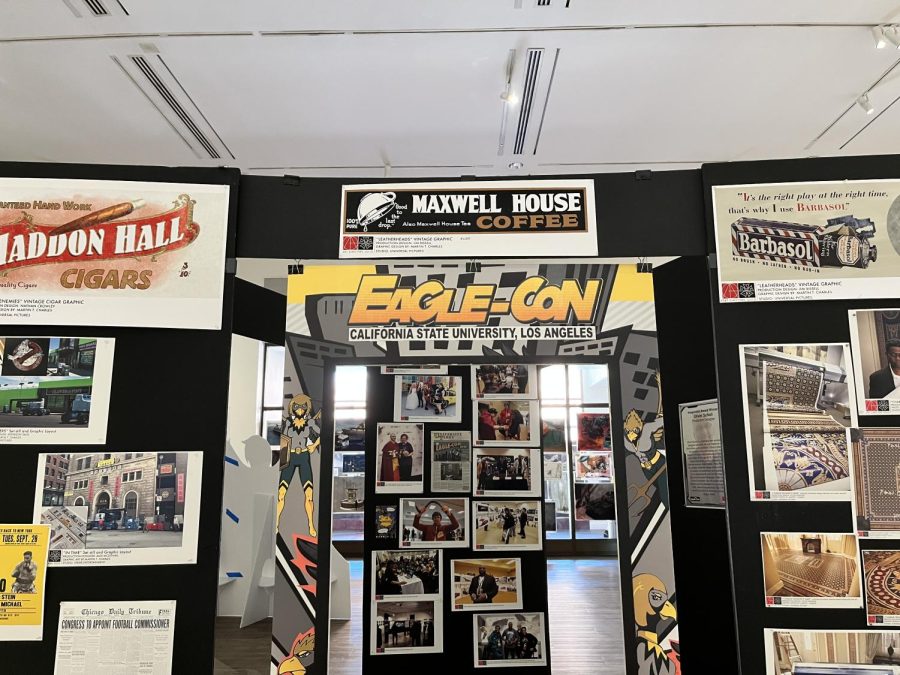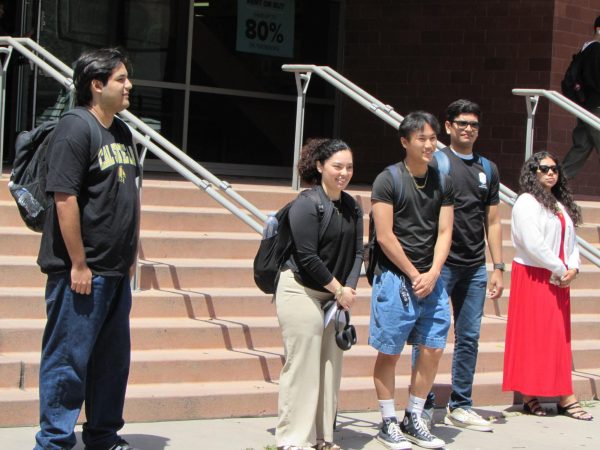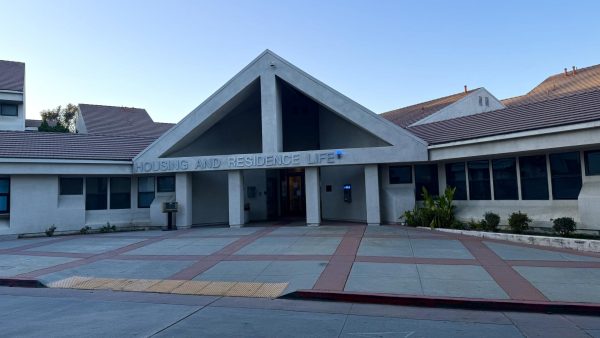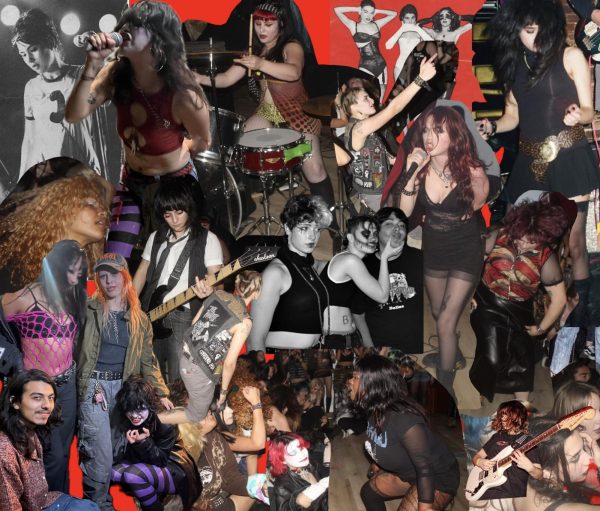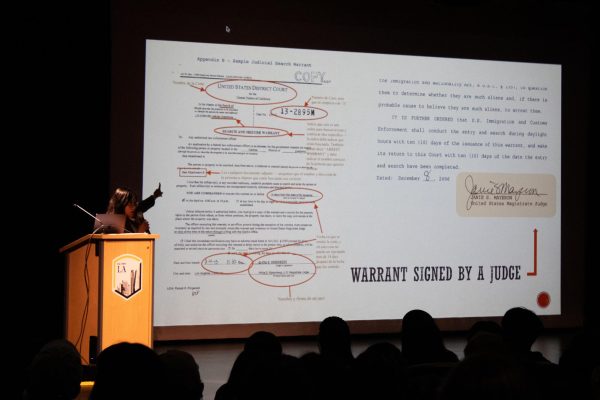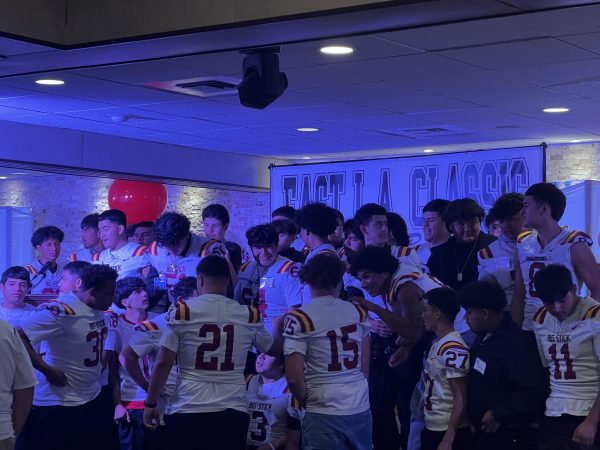‘Not just white boys and gadgets’: Eagle-Con explores ethnicity and gender in science fiction
A photo op cutout was one of hundreds of images on display at the Eagle-Con gallery. Photo by Erik Adams.
While dismantling science-fiction stereotypes and discussing the genre’s marginalized chronicles, Eagle-Con’s “Multi-ethnic History of Science Fiction” event sparked discussion and explored new perspectives at the University Student Union Theater last month.
The talk was presented by Patrick B. Sharp, professor of liberal studies at Cal State LA.
“Science fiction is a global genre that has shown up for centuries, in some cases, across ethnicities, across nations and across languages,” Sharp said.
Early in the talk, Sharp’s presentation covered the early non-white and non-male figures of science fiction, particularly the women who contributed to the genre.
“Between 1926 and 1945, 450 women worked in science fiction magazines,” Sharp said in the presentation. “Either as writers, as editors, as science journalists, as artists… The idea that women didn’t become involved in science fiction until the 1960s is one of the most pervasive and ridiculous myths that exists about the genre.”
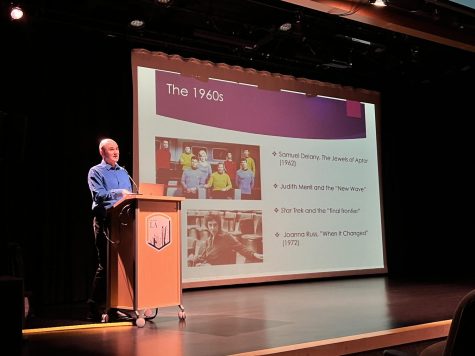
Sharp critiqued what he called the “masculine conquest of nature and universe,” which existed as a common trope in the “golden age” of science fiction around the 1930s and 1940s. He said some of the women in science fiction who pioneered the genre’s development.
Among them were Margaret Cavendish of the 17th century, C.L. Moore of the 20th century, and Mary Shelley of the 19th century.
Though not always remembered as a work of science fiction, Sharp said that Shelley’s 1818 novel “Frankenstein” “is a critique of scientific masculinity.”
“He’s trying to conquer nature, conquer death,” Sharp said of “Frankenstein’s” protagonist. “That language of conquest is there and [Shelly] points out what can go wrong with that. You create monsters that come back and destroy you.”
Histories of Afro-futurism, Indigenous-futurism and Latinx-futurism were among the main pillars of conversation in the presentation.
Sharp mentioned films like “Black Panther: Wakanda Forever,” and books like “Walking the Clouds: An Anthology of Indigenous Science Fiction,” by Grace L. Dillon to explain these concepts.
With authors like H.G. Wells popularizing the alien invasion plotlines that are common in sci-fi, invasion and colonization perspectives can shift the focus in Indigenous-futurist writing.
“Dillon’s point and the point of a lot of Indigenous-futurists is ‘we don’t have to imagine that,’ That is the past to us,” Sharp said to the audience. “That’s not some imaginary future.”
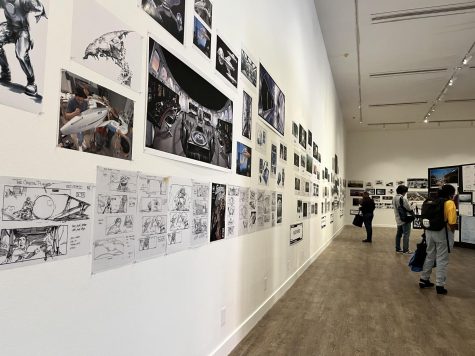
A short question and answer segment concluded the time in the theater. After several questions were asked by the audience, the group was guided to view the Art Directors Guild Visual Alchemy Exhibition on display at the Gallery at the Luckman Fine Arts Complex.
The Eagle-Con page on Cal State LA’s website said that the gallery, “features work from legendary creators who have been honored with the Eagle-Con Imaginator award.”
Here, guests perused the walls where pieces of photographs and sci-fi concept art hung on display. Some of the films included on the walls of the gallery were “Black Panther,” “Jurassic Park,” the “Star Wars” franchise and “Mars Attacks!,” among others.
Neco Enecon, a Television, Film and Media student, attended both Sharp’s presentation and the gallery tour. He said the biggest takeaway from the presentation had to do with the different ethnic futurisms becoming more visible in the current age.
“Right now, what we’re seeing is the beginning of a new side of media history,” Enecon said. “The future will be that. We’re just seeing the foundation of it. I think that that was pretty cool.”
Saturday’s presentation held a small audience of fewer than a dozen attendees, leaving most of the seating in the theater empty.
For the Cal State LA students who missed out on attending, “it’s definitely a missed opportunity, for sure,” Enecon said. “But I think a big part is the promotion … even just word of mouth makes a big difference.”
Enecon heard about the event through a professor.
“Had she not told me, I wouldn’t have known anything,” Enecon said.
Though the crowd was small, discussion ensued from audience questions, both in-person and through an online livestream.
Sharp hopes the audience left the event knowing that “science fiction is for everybody,” he told the University Times.
“The history of the genre is sometimes problematic. There have been racist storytelling tropes and homophobic storytelling tropes and misogynist tropes in the genre,” Sharp said. “But there have always been progressive visions too. And that has been increasingly so in the contemporary period. So I hope people don’t dismiss science fiction, just because of the stereotypes about its past.”
For more information and news about Eagle-Con, visit the event’s page on the university website or the Instagram account, @eagleconla.
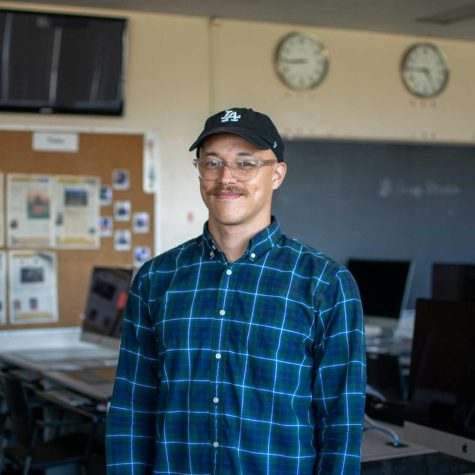
Erik Adams is a third-year journalism major and multimedia reporter at The University Times. He enjoys covering culture, history and social issues. He...

